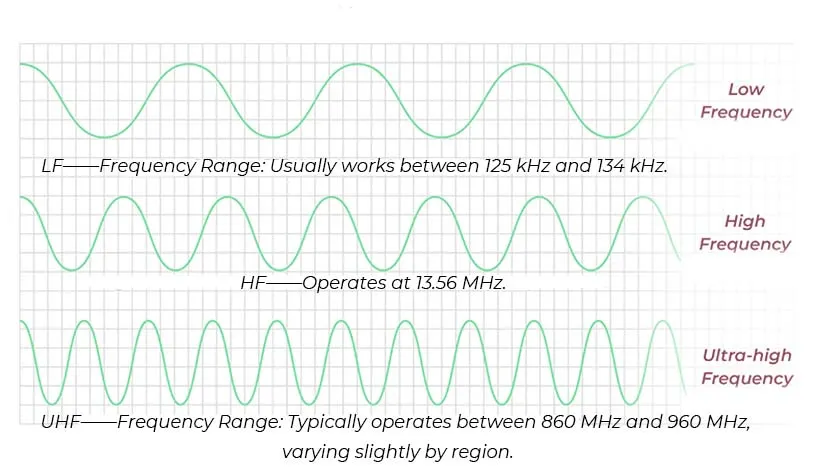This post explores how RFID UHF tire tags can revolutionize fleet operations by enhancing efficiency by up to 90%. Key features include real-time tracking, improved inventory management, and reduced downtime through proactive maintenance alerts. The advantages extend to cost savings, increased asset lifespan, and streamlined workflows, making it a game-changer for fleet managers. With the ability to capture critical data instantly, these innovative tags offer a distinct edge in optimizing fleet performance and ensuring operational excellence.
Tag Archives: supply chain management
Request error occurred:
RFID technology is revolutionizing the healthcare sector by enhancing asset tracking, improving patient safety, and increasing operational efficiency. This innovative technology allows for real-time tracking of medical equipment, ensuring that critical assets are readily available and reducing the risk of loss. Additionally, RFID enhances patient safety by enabling precise identification and monitoring, minimizing medication errors, and ensuring timely treatment. The operational streamlined processes furthermore boost efficiency by tracking inventory, reducing costs, and optimizing workflows. Overall, RFID stands out for its ability to integrate seamlessly into existing systems, offering healthcare providers valuable insights and improved care quality.
The post “Seamless Warehousing in Supply Chain Management through UHF RFID Readers” explores the transformative impact of Ultra High Frequency (UHF) RFID technology on warehousing operations. It highlights how UHF RFID readers enhance inventory accuracy, streamline tracking processes, and reduce human errors, resulting in improved efficiency within supply chains. Key advantages include real-time data capture, increased visibility of goods, and the ability to automate various warehousing tasks. The post also emphasizes the distinct qualities of UHF RFID, such as its ability to read multiple tags simultaneously and over greater distances, making it an indispensable tool for modern supply chain management.
This post delves into RFID (Radio-Frequency Identification) technology, highlighting its revolutionary impact on various industries. It explains the fundamental types of RFID tags—active, passive, and semi-passive—along with their unique features and functionalities. The article emphasizes the advantages of RFID, such as enhanced inventory management, improved accuracy in tracking assets, and increased efficiency in operations. By exploring the diverse applications of RFID technology, the post showcases its potential to streamline processes and drive innovation across sectors, making it a crucial tool for modern businesses.
This post explores the transformative impact of RFID laundry tags across various industries, including hotels, healthcare, and commercial laundry services. It highlights pivotal features such as real-time tracking, inventory management, and enhanced operational efficiency. The advantages of RFID technology include reduced labor costs, minimized loss of items, and improved service speed, leading to higher customer satisfaction. Unique qualities, such as durability and the ability to withstand harsh laundry conditions, position RFID tags as indispensable tools for modern laundry management. Overall, the article emphasizes how RFID laundry tags are redefining standards in efficiency and reliability for businesses.
Active RFID tags are advanced tracking devices equipped with their own power source, enabling them to broadcast signals for locating and identifying objects over longer distances compared to passive tags. Key benefits include enhanced range, real-time tracking, and the ability to store more data. These tags are widely utilized across various applications such as inventory management, asset tracking, and personnel monitoring, showcasing their versatility. Their distinctive qualities, such as real-time data transmission and improved accuracy, make them an essential tool for businesses aiming to optimize operations and enhance efficiency.
This post provides a comprehensive overview of RFID (Radio Frequency Identification) frequencies, detailing their distinct characteristics and practical applications. It highlights the advantages of different frequency ranges, such as low, high, and ultra-high frequencies, and how these affect read ranges, data transfer rates, and environmental adaptability. The article also underscores the technological advancements that enhance RFID efficiency and reliability, making it a vital tool in various sectors, including logistics, retail, and healthcare. Overall, it emphasizes RFID’s transformative potential in streamlining operations and improving inventory management.
This post delves into the significance of Auto-ID technology, specifically focusing on RFID (Radio Frequency Identification) as a cornerstone of modern automation. It highlights RFID’s pivotal features, such as its ability to enhance inventory management and streamline supply chain processes. The advantages of RFID include increased accuracy, real-time data tracking, and improved operational efficiency. Additionally, the article emphasizes RFID’s distinctive qualities, like contactless scanning and the capacity to read multiple tags simultaneously, making it an essential tool in various industries. Overall, the post illustrates how RFID technology is transforming automation, driving innovation, and enhancing productivity in today’s fast-paced environment.
RFID Asset Tracking Systems are innovative technologies that use radio frequency identification to enhance the management and tracking of assets. This post explains how these systems operate, detailing the components such as tags, readers, and software, which work together to capture real-time data on asset location and movement. Key advantages include increased efficiency, reduced labor costs, and improved inventory accuracy, leading to better resource management. The post also highlights distinctive qualities such as the ability to track items in bulk, protection against loss, and the scalability of RFID solutions, making them essential for businesses seeking optimized operations and comprehensive visibility into their assets.
- 1
- 2








